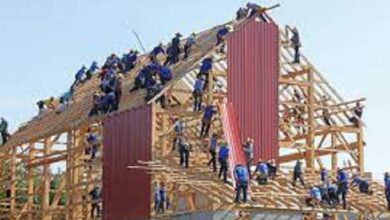How did Karl Marx define social class its Characteristics and Types
Social class
Social class is formed from people by level or social status . Each class has a set of values, attitudes, beliefs, and norms of behavior that differ from those of the other classes. In this article we will provide you the information that how did Karl Marx define social class?
The concept of social class has become common sense today. We talk about class in economics, in education, in culture. Research classifies us into classes, yet often we do not know the real meaning and construction of this concept. Also, social class is a sociologically constructed concept, based on empirical and theoretical observations, and in this sense, it is worth seeing how it is constituted, so that we can use it in the best possible way.
In other words, sociology seeks to understand the social life of certain groups and societies . Among the various topics present in sociology, the study of social classes stands out. This topic involves many aspects and can be understood from different angles; therefore, it is the subject of great debate.
On the other hand, the most common view on social class is that it has to do with a group of people who share lifestyles, cultural patterns, similar political orientations and in the economic factor this is even more visible.
Characteristics
The following are the main features of the class system :
- It is a system of hierarchy of status.
- A social classification system based primarily on economic position.
- A system marked by an unequal distribution of wealth and power.
- It is a more mobile system than the caste system.
- A system in which status is achieved through one’s own efforts rather than being attributed, assigned, or inherited.
- A system that has a certain degree of permanence of the class structure.
- System based on stratum (class) consciousness and solidarity.
- A system that has a distinctive way of life and cultural expressions of each class.
- A system based on the recognition of superiority and inferiority in relation to those who are or are below the social hierarchy.
- It is a system in which the boundaries between classes are fluid and are defined with less precision.
- A system in which social classes act as subcultures: each social class is a system of behavior, a set of values, and a way of life.
Social class according to Karl Marx
For Karl Marx, class reflects the fundamental division of labor , not simply the possession of wealth. The size of the bag is a purely quantitative difference. Whereby any two individuals of the same class can conflict. It is known as “based on craft differences.” However, it is also well known that modern class differences are in no way based on craft differences.
It is the division of labor that produces very different occupations within the same class. The centrality of class for Marx is that classes arise from the division of labor in production and act as agents in history; the ruling classes are represented and act through the state.
For Marx, classes do not arise automatically, but through a gradual process of struggle. Furthermore, the history of mankind is based on the accumulation of tension between classes, which ultimately leads to a revolution and the establishment of a new mode of production.
For him, social stratification is classified mainly by production . The production relationship is based on employer- employee working conditions , division of labor, means of production. He also raised the idea that communist society can solve the production of inequality that social stratification brings.
Social class according to Weber
Max Weber thought that bureaucratization will bring a higher level of social control. Weber developed the three components of stratification, that is, class, status, and party. For Weber, the “class” is defined as:
- When several people have in common a specific causal component of their life chances.
- Likewise, when this component is represented exclusively by economic interests in the procession of goods and income opportunities.
- Or when it is represented under the conditions of the merchandise of the labor markets. The mode of distribution, according to the law of marginal utility, excludes the non-rich from competing for high-value goods; it favors the owner and gives him a monopoly so that he can acquire those goods.
All other things being equal, the mode of distribution monopolizes the opportunities for profitable deals for all those who. Provided with goods do not necessarily have to exchange them. The mode of distribution gives the owners a monopoly on the possibility of transferring property from the sphere of use as “wealth” to the sphere of “capital”, that is, it gives them the entrepreneurial function and all the possibilities of direct or direct sharing. indirectly returns. in capital. In your thoughts
Types of social classes
Researchers generally agree that the general population can be divided into upper, middle, working class, and lower class . The typical characteristics of the types of social classes are given below.
It must be recognized, however, that not all individuals in a particular society have the same values, attitudes, they are beliefs for some. Furthermore, a person who sees himself as a member of one group may be seen by another as belonging to a different one.
The upper class
The upper class is characterized by its accumulation of wealth, influence in both the public and private sectors of society, small size, high income, high level of education, and stability of family life. Sociologists have divided it into two groups:
- The upper-upper class : It is made up of families with very “old” names (they have a long history of wealth and influence). The members are born in it. The surnames generally associated with the upper-upper class include, for example, surnames such as Rockefellrs, Roosevelt, and Ford.
- The lower-upper class : It is made up of families with very “new” names (who have acquired their wealth and influence more recently). Many members may have material possessions and wealth that are more valued than members of the upper-upper class, but because they were not born into one of the “society” families, they generally do not attain superior-superior membership until they marry members of that group.
Middle class
Since the turn of the century, the growth of industry and large companies has been accompanied by a corresponding need for administrative, managerial and professional personnel. The need has led to an increase in the number of people who are members of the middle class. We tend to think of middle class society with the same associated values and attitudes. Its characteristics are the belief in the value of hard work, education, family life and honesty. The following are the middle class types:
- The upper-middle class : it is characterized by having high income, high level of education, low level of unemployment and a high value in saving and planning for the future. Members of the upper middle class are employed in professional or managerial positions, are politically active, and have a high level of participation in community activities.
- The lower middle class : It consists mainly of clerical and office workers, small entrepreneurs and businesswomen, sales representatives, teachers, and middle-level management employees.
The values of members of the upper-middle class are generally shared by those of the lower-middle class and their members value saving and planning for future needs, earn a moderate income, and try to secure additional education beyond education. high school.
The working class
It is a class of primarily manual and semi-skilled workers that can be found in almost any business or industry. The large amount of manual labor performed from work in coal mines and construction sites to work in factories and farms, is performed by its members (within this category, a limited number of highly skilled workers who generally receive a tax much higher pay than other workers).
Members of the working class earn a fairly low income, they cannot accumulate savings, they try to meet their immediate needs instead of doing so. You have to plan for the future, achieve a low level of education, and use credit extensively.
Low class
The lower class that is at the bottom of the social status scale in the stratification system of many countries in the world. Its members may have zero income or income so low that they are considered to be at the poverty level . They tend to have no savings and little education, and are generally in poor health.
Most of the welfare organizing, equal opportunity, and affirmative action programs enacted by individual state legislatures or congresses are aimed at providing assistance and raising the economic standards of members of the lower class.




